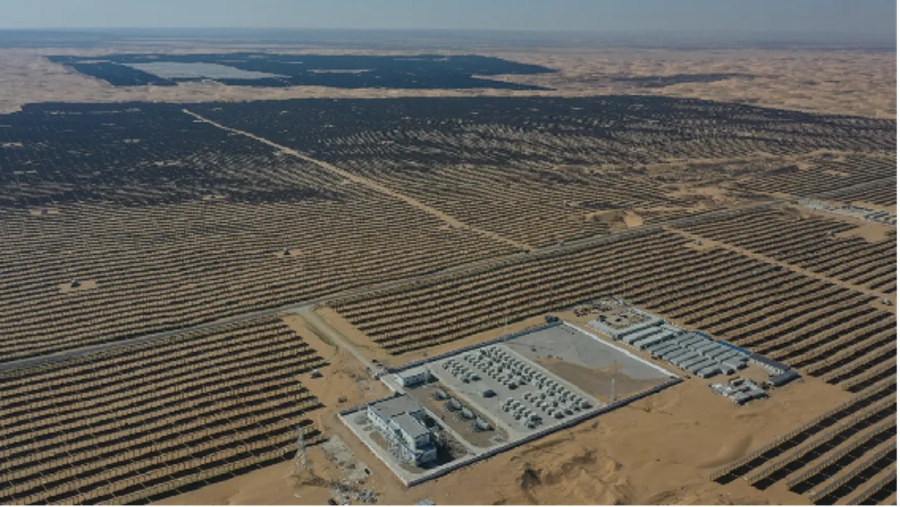New sodium-ion developments from CATL, BYD, Huawei

While lithium-ion batteries keep getting cheaper, making it difficult for alternative technologies to catch up on cost and scale, Chinese battery industry heavyweights are actively developing their sodium-ion products.
On November 18, CATL announced its second-generation sodium battery. Addressing the World Young Scientists Summit, chief scientist Wu Kai said the new battery will be launched next year – four years after the release of CATL’s first sodium-ion battery in 2021. The first generation had an energy density of 160 Wh/kg, while the next one is expected to exceed 200 Wh/kg. Mass production of the new product is not expected before 2027.
In 2023, CATL said Chinese automaker Chery would be the first to use its sodium-ion batteries. Last month, it unveiled its Freevoy hybrid battery pack, which combines sodium-ion batteries and lithium-ion batteries and is specifically designed for extended-range electric vehicles and plug-in hybrids, with a range of over 400 kilometers and 4C superfast charging. The new design leverages sodium-ion’s superior low-temperature performance to enable discharge capability in extreme cold environments down to -40 degrees Celsius and charging capability down to -30 degrees Celsius.
CATL told pv magazine late in 2023 that it has developed a basic industry chain for sodium-ion batteries and established mass production. Production scale and shipments will depend on customer project implementation, said CATL, adding that more needs to be done for the large-scale commercial rollout of sodium-ion batteries. “We hope that the whole industry will work together to promote the development of sodium-ion batteries,” said the battery maker. However, in a recent interview, CATL Chairman Robin Zeng voiced much more audacious expectations, saying that sodium-ion batteries are a better bet, potentially replacing up to 50% of the market for lithium iron phosphate batteries, which CATL presently dominates.
In the meantime, CATL’s rival BYD said that its sodium-ion batteries have made progress in reducing cost and are already on track to be on par with lithium iron phosphate battery cost next year and even 70% less in the long run. The Chinese battery maker broke ground on a 30 GWh sodium-ion battery factory earlier this year.
However, the development and design of its first utility-scale battery energy storage system appear to be in advanced phases already. A post shared by a company representative on LinkedIn a couple of weeks ago showed a product called MC Cube SIB ESS. The product has a power output of 1,155 kW and a storage capacity of 2.3 MWh. Its nominal voltage stands at 1,200 V, and the voltage range spans from 800 V – 1,400 V.
Compared to the standard 20-foot lithium-ion container, which houses 5 MWh on average, BYD’s new product will have less than half of this energy density. However, it is expected to capitalize on the technology’s low-temperature tolerance, long cycle life, and improved safety.
A company source told ESS News that this product will be available for delivery in China in Q3 2025 and will have a price per kWh similar to that of lithium iron phosphate batteries – which aligns with BYD’s earlier predictions about the sodium-ion cost decreases and refutes the common expectations that sodium-ion’s cost advantage is only achievable when the scale of production reaches a manufacturing scale comparable to lithium-ion battery cells.
Namely, sodium-ion’s lower cost mainly comes from abundant sodium and low extraction and purification costs. Sodium-ion batteries could potentially use aluminum for the anode current collector instead of copper – which is used in lithium-ion – additionally reducing costs and supply chain risks. Further modifications are also possible.
On November 22, China’s Huawei announced a new patent for sodium-ion batteries named “Electrolyte Additives and Preparation Methods, Electrolytes and Sodium-ion Batteries.” The company’s latest work has focused on improving the shortcomings of sodium batteries – such as low coulombic efficiency and poor cycle life – by optimizing the electrolyte formula.
The electrolyte additive includes sodium ions and cyclic anions, and the ring structure of the cyclic anions contains unsaturated bonds, explained Huawei Technologies Co., Ltd. and Zhuhai Saiwei Electronic Materials Co., Ltd. in their patent application submitted on May 19, 2023.
The electrolyte additive is easily oxidized and de-sodiumized and can undergo redox reactions on the surfaces of the positive and negative electrodes to form a stable and dense interface film, thereby inhibiting side reactions between the positive electrode and the electrolyte.
Earlier this year, Huawei filed another patent for composite cathode material, signaling its ongoing commitment to investing in sodium battery technology.












